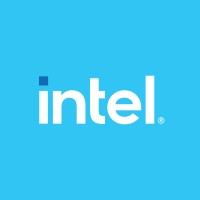FAQs
What is the primary responsibility of the Post Silicon Debug Pathfinding Engineer at Intel?
The primary responsibility of the Post Silicon Debug Pathfinding Engineer is to execute experiments for new generations of focused ion beam platforms and ion beam technologies, provide analytical support on ion beam machined samples, and offer silicon debug support on Intel's leading-edge server and client products.
What types of technologies will the engineer be working with?
The engineer will work with focused ion beam (FIB) technologies, which include Xenon Plasma FIB, Gallium FIB, Neon/Helium FIB, and Cold Beam technologies.
What educational background is required for this position?
A candidate must have a Bachelor's degree in electrical/computer engineering, Computer Science, Chemical Engineering, Material Sciences, Physics, or a related STEM field with 3+ years of experience, or an advanced degree in the same fields with 1+ years of experience.
What qualifications are preferred for this role?
Preferred qualifications include a background in device physics, circuit layout, and process technology; hands-on experience in vacuum technology and electron/ion microscopy; experience in project management; and experience working with government programs.
What specific skills are required for conducting analytical support on ion beam machined samples?
Skills required include familiarity with Scanning Electron Microscopy (SEM), Transmission Electron Microscopy (TEM), focused ion beam system operations, device performance characterization using a parametric analyzer, as well as general knowledge of electronics and proficiency in Unix, PC skills, and Microsoft Office.
Is teamwork important in this role?
Yes, the role requires the ability to work both independently and collaboratively with teams across multiple organizations and geographies.
What are some example tasks the engineer will perform related to circuit editing processes?
Tasks include collaborating with the operation support team to develop and improve circuit editing processes, working with circuit designers and component debug teams on direct write device modification, and developing best practices for ion beam machining.
How important are communication skills for this position?
Good written and verbal communication skills are essential, as the engineer will be responsible for creating training documentation and collaborating with various teams.
What experience or knowledge areas are emphasized for this role?
Emphasis is placed on experience or knowledge in device physics, semiconductor fabrication processes, silicon or package physical failure analysis, and circuit edit application development or related fields.
What type of work environment can the Post Silicon Debug Pathfinding Engineer expect?
The position is primarily an in-lab role, where the engineer will be hands-on with various advanced technologies and equipment related to semiconductor research and development.

